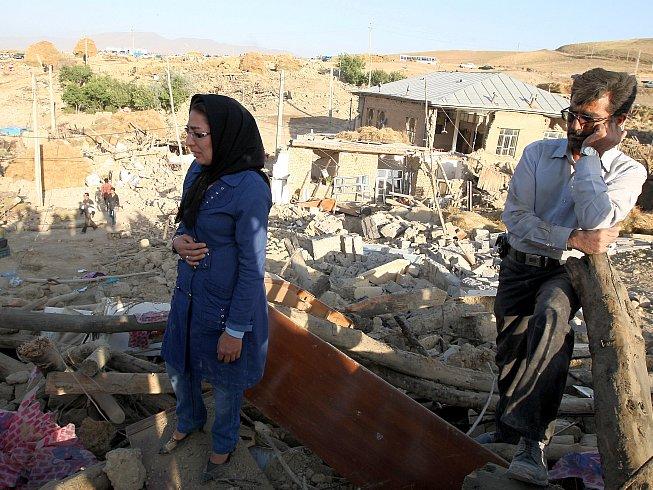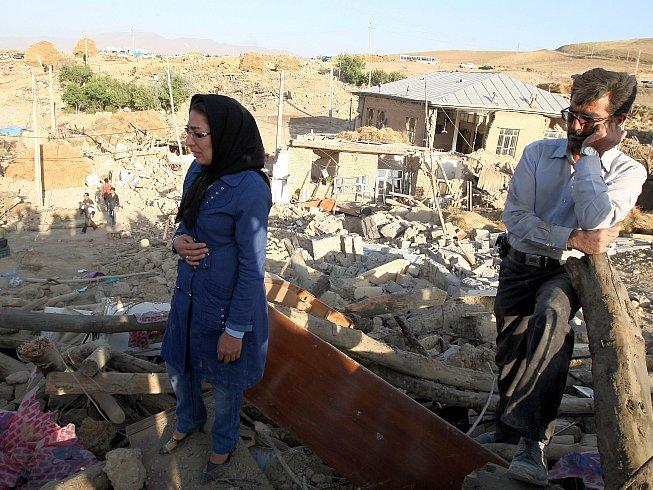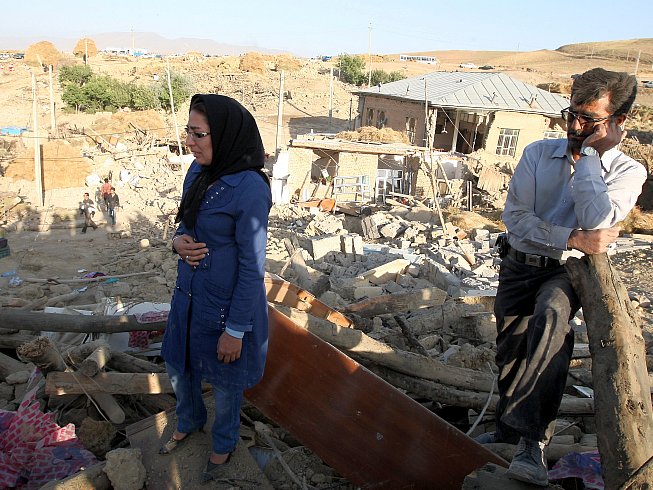Earthquakes continued to shake northwest Iran Tuesday following the deadly twin quakes that hit the region over the weekend. According to reports so far, aid has been slow to trickle to the affected areas.
The Institute of Geophysics at the University of Tehran reported a magnitude-5.3 quake Tuesday near Varzeghan, one of the townships affected in Saturday afternoon’s quake. A series of smaller-magnitude aftershocks continued throughout the day.
The official death toll from the weekend’s earthquakes of magnitude-6.0 and magnitude-6.2 in Iran’s East Azarbaijan Province has been put at just over 300 so far, though reports from on the ground indicate the number could be much higher.
“From what I saw, considering the extent of the destruction, the death toll is definitely not just 306 or 307,” Solmaz Eikder, a freelance journalist who traveled to the quake-ridden region, told The Epoch Times.
Eikder says many people buried their dead immediately following the tragedy, in which case, some fatalities have so far gone unreported.
Authorities in Iran have come under criticism for the slow response to aid the victims. Eikder says she visited the area the day following the quake and found many victims lacked tents and other basic supplies, and had to spend the night without shelter.
Due to poor management, Eikder says, a lot of the supplies were also not making it to victims in a timely manner, and in many cases, she and her colleagues arrived in the affected areas before aid authorities.
“We saw for example in the center of Varzeghan that an aid truck with a load of mineral water was parked under the sun, but a village we visited later that was four kilometers away still hadn’t received any water.”
Iranian members of Parliament representing the affected areas criticized the government Monday for the slow and insufficient response to help the victims.
“People rapidly helped the earthquake victims on the side of the road, but as we got deeper into the regions the aid effort was faced with more challenges,” lawmaker Masoud Pezeshkian told Parliament, reported Iran’s ISNA.
“It can be said with certainty that if the earthquake didn’t happen in daytime, fatalities would have been much higher,” he said.
Conditions for some victims improved as aid from different parts of the country poured in Monday, Eikder says, but adds that some remote regions still haven’t been helped due to difficult road conditions to get there.
Tehran-based freelance journalist Keyvan Mehregan told The Epoch Times that Iranians have flocked to blood donation centers to help the victims, and people remain eager to help.
“Volunteer teams have formed in the surrounding areas—Mahabad, Sanandaj, Kermanshah—and in Tehran; they gather and transport the needed items to the affected regions,” Mehregan says.
After initially rejecting all foreign help to deal with the crisis and turning away a Turkish aid team that had entered the affected region, Iran said on Tuesday it now welcomes help from any country.
The United States offered the people of Iran condolences and help Sunday following the earthquakes.
“Our thoughts are with the families of those who were lost, and we wish the wounded a speedy recovery. We stand ready to offer assistance in this difficult time,” White House spokesman Jay Carney said in a statement.
The Epoch Times publishes in 35 countries and in 19 languages. Subscribe to our e-newsletter.



